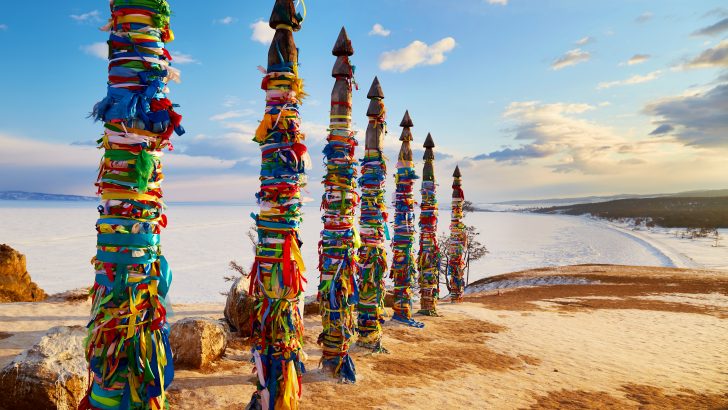The roots of Siberian shamanism encompass a vast region in Asia.
Indigenous peoples of Siberia have practiced it for centuries through various rituals.
Siberian shamans engage in mind-altering states to establish communication with the spirit world, often harnessing energy and pulses from natural elements like animals.
What makes Siberian shamanism unique? How does it differ from other cultures?
Here’s everything you need to know about Siberian shamanism – and more.
1. What Is Siberian Shamanism?
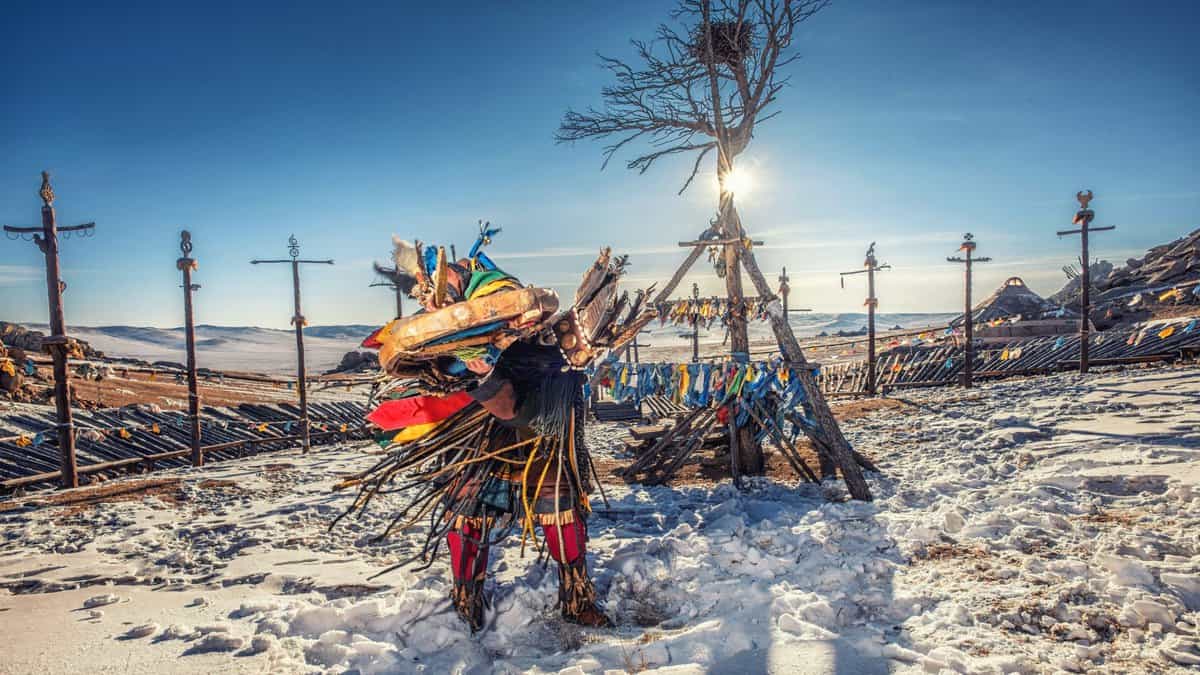
What is Siberian shamanism? What are the ins and outs?
Shamanism in Siberia involves healing, leading, and guiding. Because of this, shamans often hold a critical role in society, helping people find balance, harmony, and clarity.
Shamans can solve problems and provide healing when necessary.
People look to them for wisdom and guidance in times of need.
The intimate connection with the spirit world allows them to harness divine insights. More than that, shamans can protect against evil spirits and help stabilize spiritual vibrations.
Shamanism has been practiced in Russia for a very long time – and it persists.
Shamans can be found near Lake Baikal in the south and central Asia.
Remnants of this ancient, sacred practice continue to persist against the marching of time.
In Russia, shamanism revolves around harnessing the energetical properties of natural elements, including plants and animals. Shamans use them for numerous purposes.
Siberian shamans can enter trance-like states of mind, journeying into the spiritual world to retrieve information, heal the wounded and sick, and resolve conflicts through wisdom.
These age-old practices are passed down from generation to generation.
And becoming a shaman in Siberia – well, that door’s closed.
However, one can still learn by studying their shamanic days and incorporating their spirituality into one’s daily life. And that’s what helps us maintain clarity in our world.
The symbolism of Russian shamanism is a vast historical landscape to lose yourself in.
There are many remote regions in which the practice of shamanism endures.
It’s persevered and still devotedly practiced to this very day.
But what do Siberian shamans believe in? How does it differ from other spiritual ways?
2. What Do Siberian Shamans Believe In?

What is the core and essence of shamanism in Russia?
In other words, what do they believe in?
For starters, animism is central to shamanism in Russia and Central Asia. What does animism mean, though? It means that plants and animals have energies and properties.
A Siberian shaman can access a higher dimension by connecting to nature.
The natural elements around him act as conduits for spiritual energy and potency.
A versed shaman understands the natural forces and exercises them effectively, channeling them in guiding or helping others. Natural energy can balance the two contrasting worlds.
And that’s what shamans do. They’re intermediaries between the human and spirit world.
A Russian shaman can expertly establish communication with the other side.
But how do they do that? Through rituals and ceremonies. Various practices, sacred tools, and objects help them thin the veil and poke a hole. There, they can unearth guidance.
From northern to southern Siberia – shamans can reach trance-like states of mind.
In other words, they can enter the Underworld, Middle World, or Upper World.
More than that, they can teach others to do so in their spiritual journeys.
Here’s how shamanism in Russia compares to other shamanic cultures:
Despite the passage of time, shamanism continues to endure in Siberia.
But what do they practice? And have their rituals changed over time?
Let’s take a closer look.
3. What Do Siberian Shamans Practice?
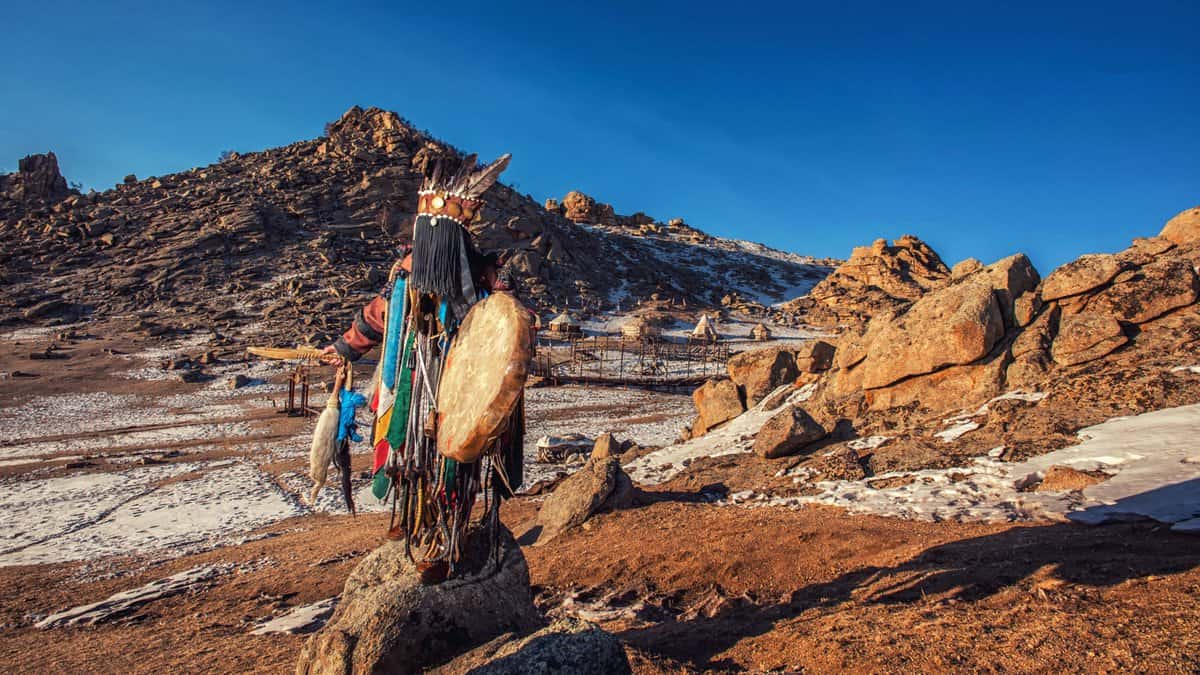
Instruments are essential to Siberian indigenous peoples – especially the drum.
Rhythmic playing and dancing are a central component of most rituals. Usually, it’s accompanied by chanting. Why? The music and vocalization help elevate spiritual energy.
In other words, it’s a soul-opening addition to any ritual. And it accomplishes more than helping shamans access the spirit world. It benefits everyone present during the ceremony.
Sometimes, a shaman may imitate animal behavior to channel nature’s energy.
And it’s not unusual for a shaman to ingest hallucinogens like mushrooms to enter the spirit world and embrace clarity. This is done to reach an elevated state of consciousness.
It allows a shaman to receive visions and experience broader awareness.
In Siberia, hunting resembles an integral part of their spiritual journeys. Why? Because it’s a way to honor and revere animals besides helping the community through hunting.
A traditional Russian shaman employs a variety of sacred tools and objects for shamanic rituals and purposes. Things like amulets, masks, costumes, and symbols take center stage.
With what benefit? To help a shaman invoke the assistance of good-natured spirits.
In other words, these sacred objects act as conduits for positive, uplifting spiritual energy.
And it’s not uncommon for a shaman in Russia to conduct fire ceremonies.
Fire is highly symbolic in Siberia, representing healing and purification. It’s a way to connect and synergize with the unseen forces that lurk beyond ordinary perception.
So, shamans in Siberia practice a wide range of rituals and ceremonies.
The practices may differ depending on the area – but they’re all equally fascinating.
And they hold significance even today in the modern world.
4. Does Siberian Shamanism Still Exist?
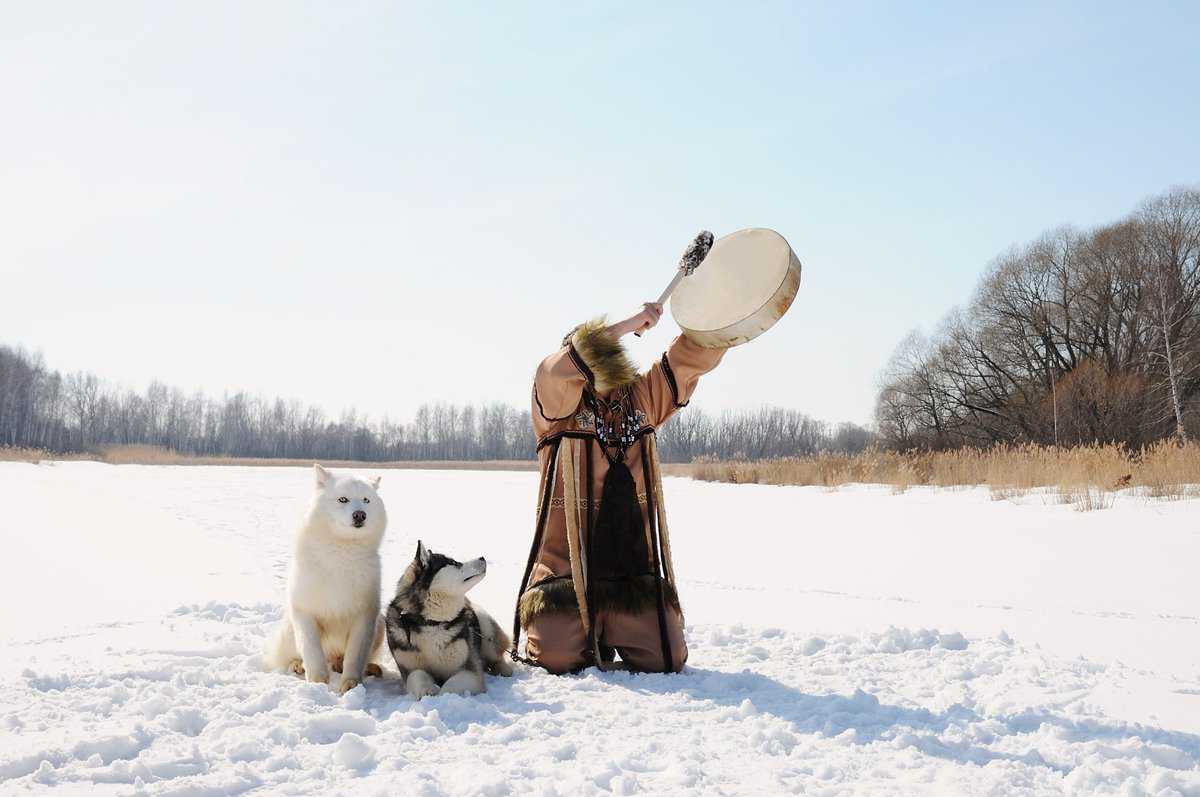
Siberian peoples still practice shamanism in specific regions. So, yes, shamanism still endures in Siberia. However, the practice has faced challenges and changes over time.
For the most part, the tradition has persevered in more remote regions where indigenous communities continue to uphold and pass down shamanic knowledge across generations.
People still practice it, but how much has shamanism changed in Russia?
Well, colonization and religious pressure have posed threats to shamanism’s continuity.
Despite this, the soul of a shaman has endured through the centuries.
Today? There’s a worldwide revival of shamanism and a growing interest in indigenous cultures and spiritual practices. Mostly, it’s due to the complexities of modern-day life.
People are tired of a soulless reality and seek to open their spiritual eyes.
Today, Siberian shamans actively maintain their practices and pass down their knowledge to the younger generations to ensure the survival and continuity of their spiritual practices.
Nevertheless, history has left a mark – and today, you can find one of two things.
Some shamans hold to ancient and sacred traditions.
And there is the modern-day shaman who draws inspiration from cultural heritage.
And this leads to another question: is it possible for anyone to become a Siberian shaman?
5. Can You Become a Siberian Shaman?

Every shamanic culture is different. Some are inclusive and open to outsiders. And others safeguard their shamanic practices and limit access to those who have been initiated.
In Siberia, the shamanic practice is exclusive to those born into it.
So, you either become a shaman through inheritance. Or spirits choose you.
Therefore, the doors to becoming a shaman remain closed and guarded.
Not all individuals can be accepted or called to walk this spiritual path.
Still, you can study and, in some cases, participate in shamanic rituals in Siberia, observing practices and ceremonies with respect for their age-old traditions and heritage.
But the learning part – that’s what stands out. Because while you might not be able to become a shaman, you can still incorporate their knowledge into your day-to-day life.
In other words, you can become a modern-day shaman.
And there’s much growth to be gained by studying Siberian ways of spirituality.
You can master the art of establishing contact with spirits. You can heal and learn to stabilize inner energies. And you may become proficient at recreating their rituals.
So, even though you can’t become a Russian shaman – don’t let that discourage you.
Dive into the pages of history and study their shamanic ways, evolving your soul.
6. In Conclusion
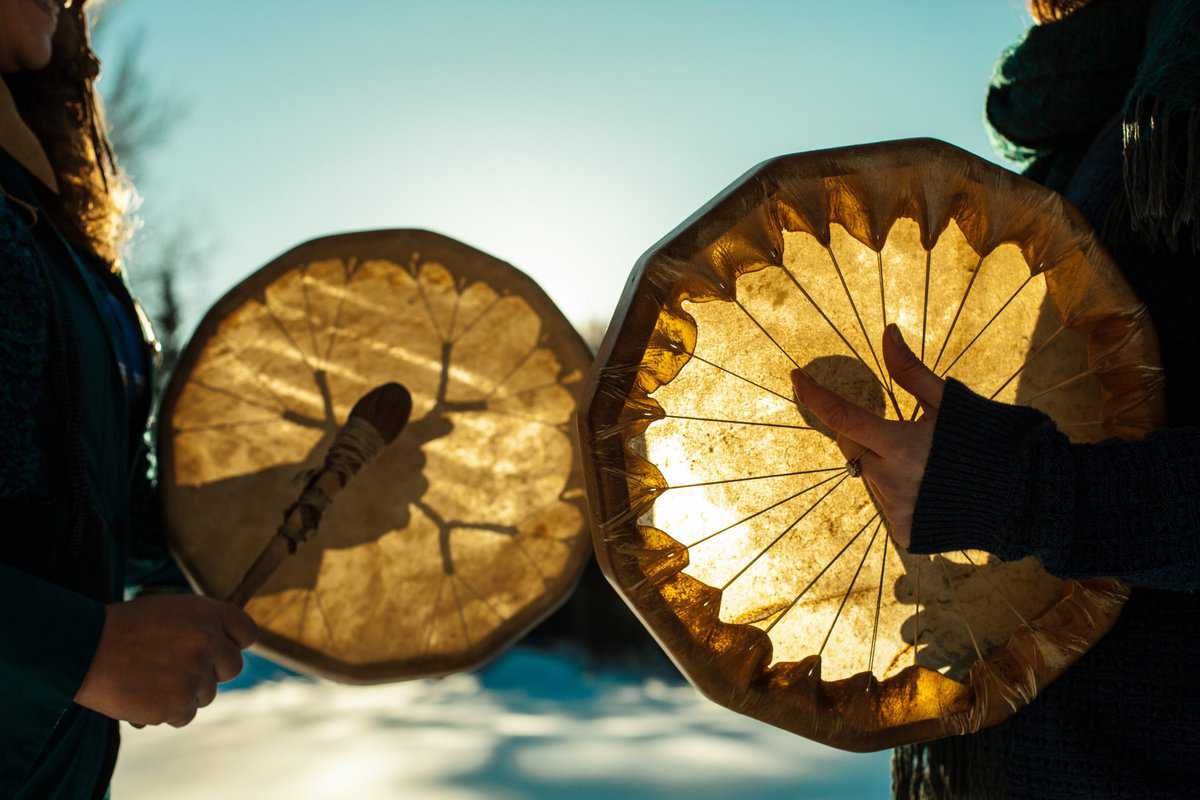
Siberian shamanism is believed to be 5,000 years old.
Throughout all this time, the shamanic way has been challenged and tested.
But the spiritual path persisted – and today, it still echoes across Siberia’s vast landscapes.
From communicating with spirits to foreseeing the future – the ways of Siberian shamans teach ancient traditions and rituals that draw inspiration from the oneness of nature.
And even if you can’t become a Siberian shaman, you can still use their knowledge.
Now, more so than ever, we all need to sprinkle a little bit of spirituality into our lives.

Painting and writing – these are two passions that I have been perfecting for a decade. I’m passionate about exploring the connections between the stars and numbers. Through insightful articles you can learn how these ancient practices can offer guidance, clarity, and self-discovery.

